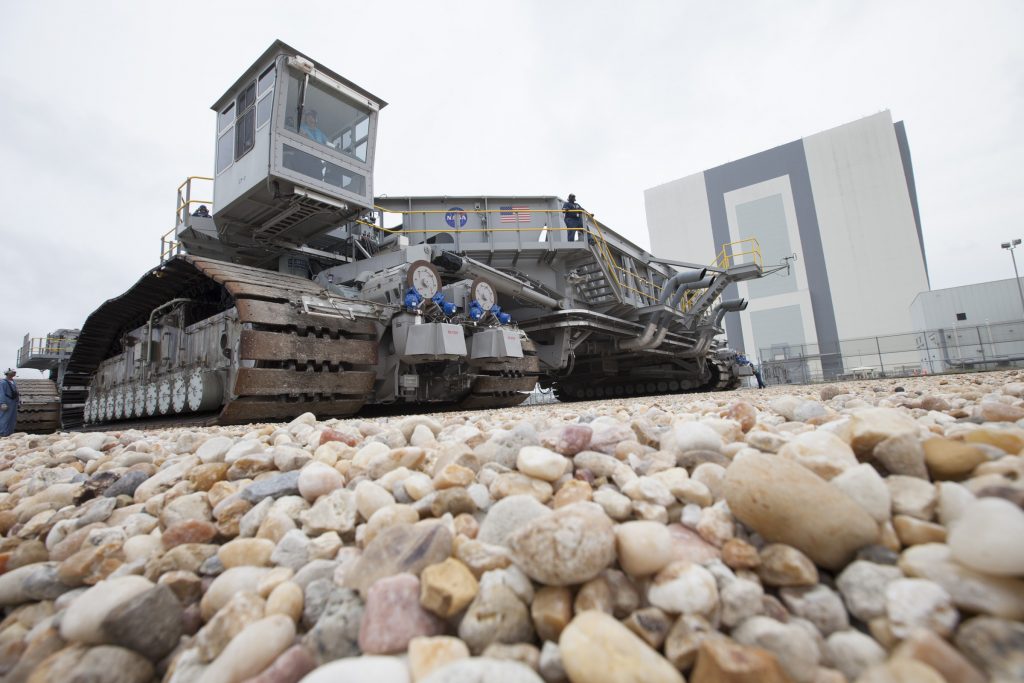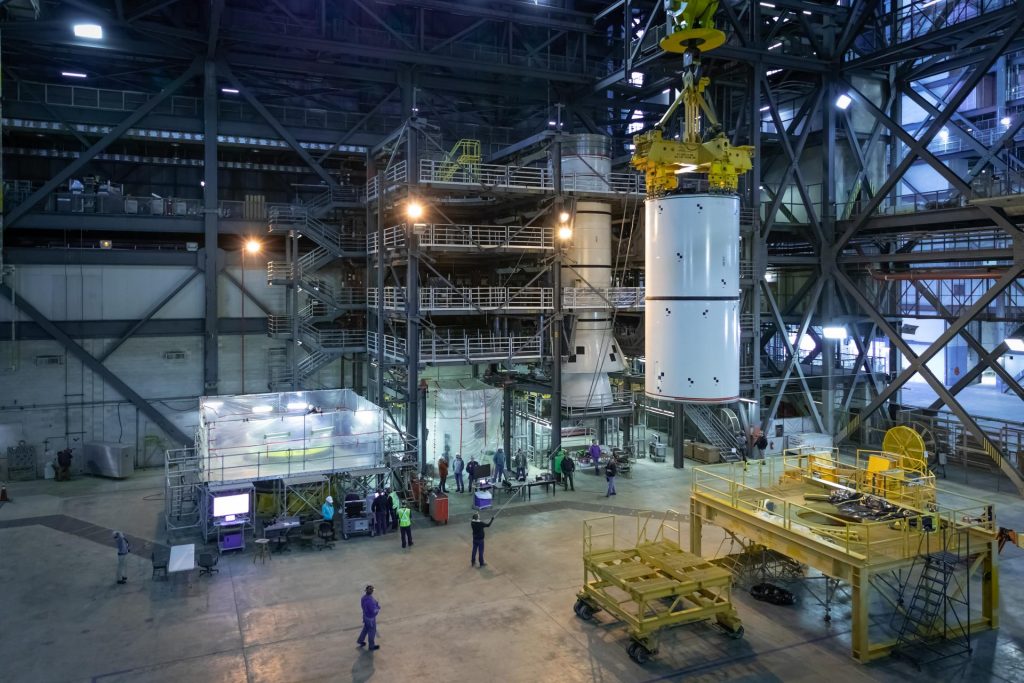
Before the most powerful rocket in existence can lift off for lunar missions, it must first make the 4.2-mile trek from the Vehicle Assembly Building (VAB) to the launch pad at NASA’s Kennedy Space Center in Florida.
For the Artemis I mission, the path from the VAB to Launch Complex 39B must be able to support the behemoth Crawler Transporter-2 — as well as the massive weight of the Space Launch System (SLS) rocket, the Orion capsule, and the mobile launcher. Teams at Kennedy are working to ensure the crawlerway is strong enough to withstand the weight and provide stability for the Artemis I mission and then some.
“Conditioning the crawlerway is important to prevent a phenomenon we call liquefaction, in which the crawler transporter, the mobile launcher, and the load on it causes the crawlerway to vibrate and shake the soil,” said Robert Schroeder, design manager of the crawlerway conditioning project and engineer at Kennedy. “Essentially, the soil itself will behave like a liquid instead of a solid, which could cause the crawler to tip to one side or the other.”
The crawlerway is currently required to support 25.5 million pounds for the Artemis I mission. However, as essential payloads will be added on future missions, the teams at Kennedy decided to test additional weight so they would be “ahead of the ballgame,” Schroeder said.
Work to prepare the crawlerway began Nov. 23. Over the next few months, technicians will lift several concrete blocks, each weighing over 40,000 pounds, onto the mobile launcher platform used for the space shuttle and Crawler Transporter-2. They will then drive the loaded transporter up and down the path between the VAB and launch pad, with each pass increasingly compacting the soil. By the time the project ends, the crawlerway will have supported more than 26 million pounds.
Artemis I will be the first in a series of increasingly complex missions to the Moon. Under the Artemis program, NASA aims to land the first woman and the next man on the Moon in 2024 and establish sustainable lunar exploration by the end of the decade.

